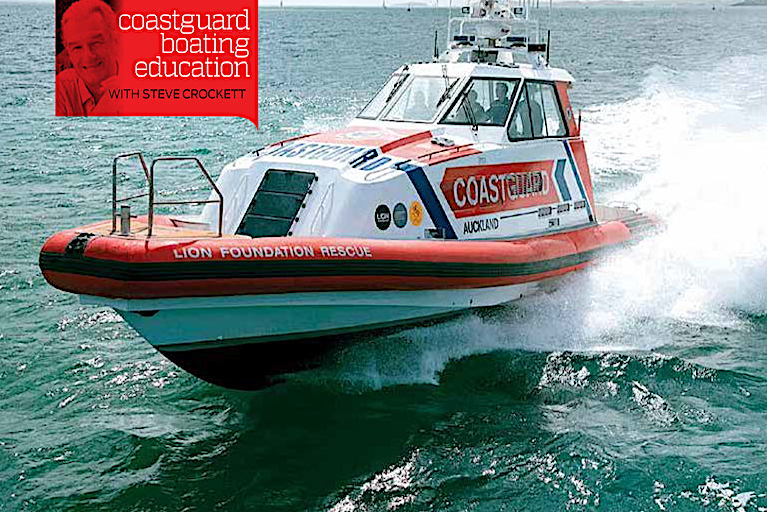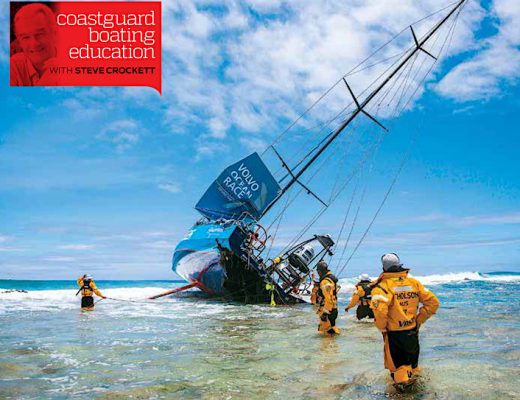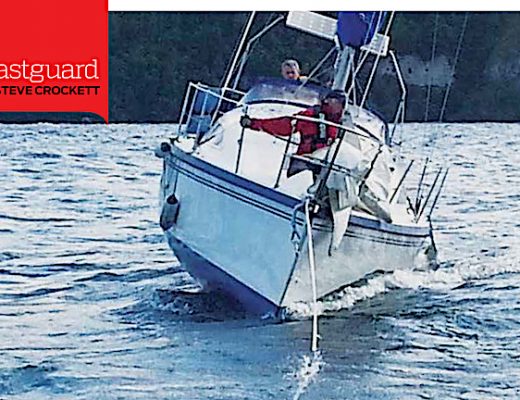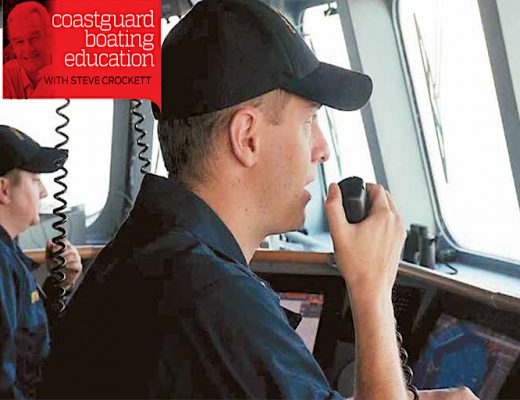FOR THOSE IN PERIL ON THE SEA.
The big red and white Coastguard RIB was approaching the boat ramp pontoon with a small runabout securely rafted in an alongside tow, and my professional interest was piqued.
I cast my eyes over the arrangement of lines and springs and observed the deployment of crew aboard the vessels.
The RIB crew in their grey overalls and inflatable lifejackets, the crew of the runabout all wearing bright yellow lifejackets. One of the Coastguard crew was in the runabout with a line ready in his hand.
The skipper of the Coastguard RIB put the little runabout alongside the dock with hardly a touch. The crewman stepped off and made fast to a cleat while his fellow Coastguard crew cast off the tow lines.
The Coastguard skipper then neatly pirouetted his vessel to come alongside the dock directly ahead of the runabout, and his crew deftly ran their lines and made fast.
I smiled and picked up my drink. I imagined the skipper saying “Isn’t it great when a plan comes together!”
WRONG IDEA
Just then two blokes came out of the club where I was sitting, drinks in hand, and one looked up and said: “Looks like Dad’s Army have got another victim.” A scowl creased my brow, and I was about to challenge him when I felt my wife’s hand on my arm. A smile and a small shake of her head stopped me.
I felt more than slightly miffed, more than peeved. Incensed is more like it. “Dad’s Army.” “McHale’s Navy”. Such silly, ignorant comments. Would they say the same of the RNLI (Royal National Lifeboat Institution) in the UK?
After all, both they and the Royal New Zealand Coastguard began their lives in the 19th century. They are both charities saving lives at sea. Neither are enforcement agencies like the US Coast Guard and both rely upon unpaid volunteers from their communities to crew vessels.
Today, the Royal New Zealand Coastguard has one of the largest fleets of vessels in New Zealand, after NIWA and DOC.
With 60 wet units scattered around the country in four regions, nine air patrol units and a dedicated communications unit, it requires a great deal of organisation … and funding.
A full 85 per cent of RNZ Coastguard’s funding is derived from fundraising and sponsorship. The remainder is made up by a service fee from the NZ government. A critical area of the Coastguard is the education arm – Coastguard Boating Education. We offer the largest range of training for
recreational boaties in New Zealand, from core courses such as Day Skipper, Boatmaster and VHF radio to speciality courses such as Radar, GPS, Advanced Sea Survival and more.
HEAVY TRAINING
CBE were also heavily involved with the creation and development of the current training programme for the Search and Rescue Units.
So for the enlightenment of casual boaties (who are required to have very little knowledge before they venture onto the water), the following is what we require of an unpaid volunteer Coastguard Skipper.
Before a volunteer can become a Coastguard Rescue Vessel (CRV ) Master he or she must undertake training which consists of 25 theory modules followed by 24 practical competencies. They must undergo four separate practical assessments at the completion of each stage of this training. The final step to becoming a Master involves a written examination and then a further four hour scenario – based practical assessment. They must have a minimum of 150 hours aboard the CRV, and the certificate is vessel-specific i.e. they must have a certificate for each vessel they command.
MANY THANKS
So next time you go out for a day on the water and you see a Coastguard vessel working out there, spare a thought for the master and crew. They are donating some of the 315,000 hours of time that Coastguard volunteers all over the country give every year to help keep you safe out there.
I think they deserve some respect, don’t you? ■





No Comments